About the development of VR-technologies: where they are used, why VR business and which devices use
The president and creative director of Modum Lab Dmitry Kirillov and Denis Tambovtsev in an open lesson in Netology told what VR is, in what areas it is used and what skills a VR specialist should possess.
Virtual reality (VR) - a world simulated by computer technology, into which the user can immerse themselves using special touch devices. VR technologies have gone a long way from the first experiments in the 60s of the XX century to modern virtual reality helmets. A new wave of interest in VR began thanks to the Oculus company and the prototype of the Oculus Rift glasses introduced in 2012.
VR continues to evolve: at a CES conference, Nvidia CEO Jensen Huang said the company sold 4 million virtual reality glasses for PCs. Sold more than a million points Oculus Go, about 2 million Sony Playstation VR and about 500 thousand points from HTC.

VR segment revenue in millions of dollars. Source: www.sostav.ru
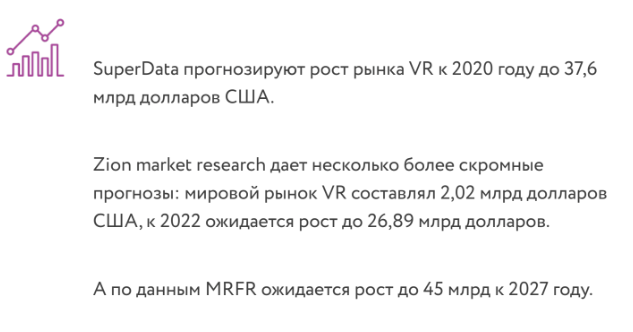
Experts predict the development of VR-technologies in the 2020s
The main obstacle to the massive introduction of VR is the lack of user experience. We have already learned how to make modern devices with an excellent picture, but there are not enough specialists who could adequately build a UX.
VR gives a new immersion experience, more tightly connects the player, character and game environment.
Kill zombies with your own hands in the game Arizona Sunshine
Game Terminator VR Arcade for LBE - entertainment in special places: gaming clubs, centers, virtual reality parks
VR allows you to create a fast and powerful wow-effect; present a product and service that is difficult to demonstrate in reality; show the amount of space, layout of the object, which may not yet be built.
Modum Lab has developed a virtual showroom of YE'S apartments
Volvo test drive
VR in training allows you to increase the efficiency of material delivery - you can put a person in situations that are difficult or expensive to simulate in reality; analyze how a person will act in an unusual situation. In banking, employees can work out customer communication scenarios.
BIOCAD uses a simulator from Modum Lab to practice skills in virtual reality
Chemistry lessons from the MEL Science project
Using VR, you can train surgeons, train doctors' skills, and advise patients.
The Susan Project - VR simulator for medical staff in psychiatry
In mobile systems, the main functions are taken over by a smartphone, which is installed in a proprietary headset, that is, the helmet is multi-component. They are convenient, easy to use, predictable from a development point of view. On the one hand, this is an opportunity to try VR inexpensively. But on the other hand, such boxes are probes, and serious decisions cannot be made on them.
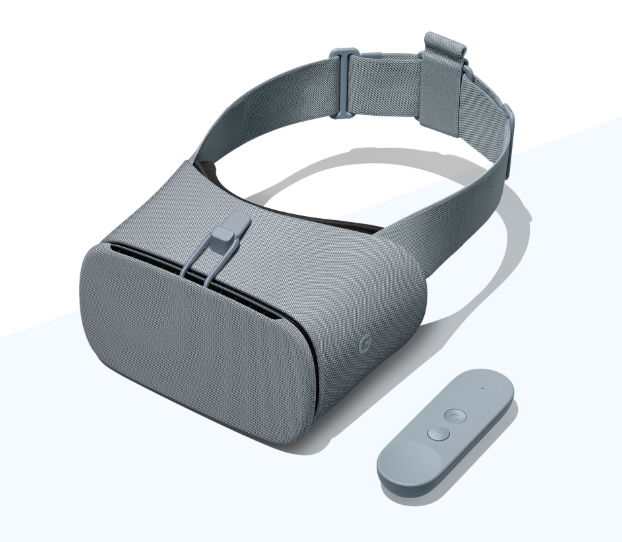
Google’s Daydream virtual glasses. Source: vr.google.com
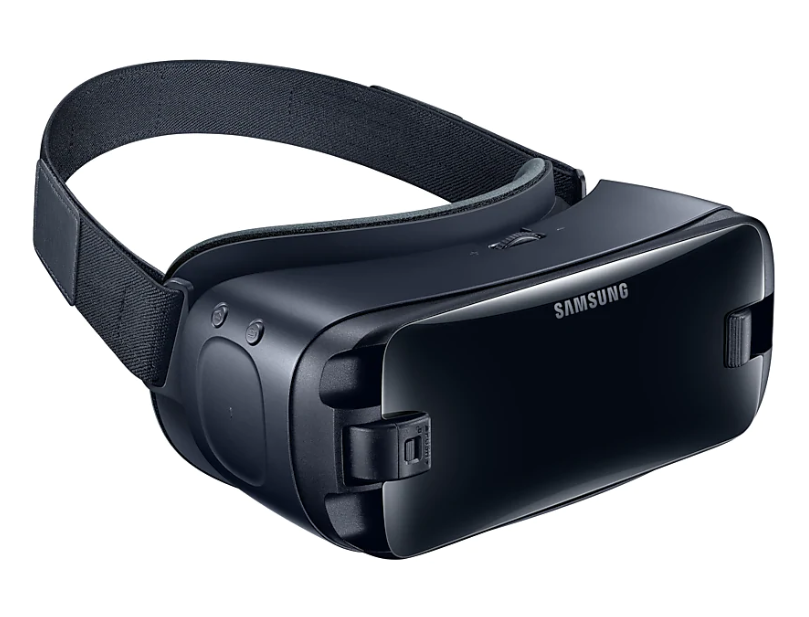
Samsung Gear VR virtual glasses. Source: www.samsung.com
Standalone VR-helmets include all the necessary technical components in a single casing of the CPU (central processing unit) and a graphics processor, displays and, sometimes, even stereo speakers. They are completely autonomous, a smartphone is not needed, the entire "filling" is already built into it. These helmets have gained great popularity, as they are quite cheap and easy to use.
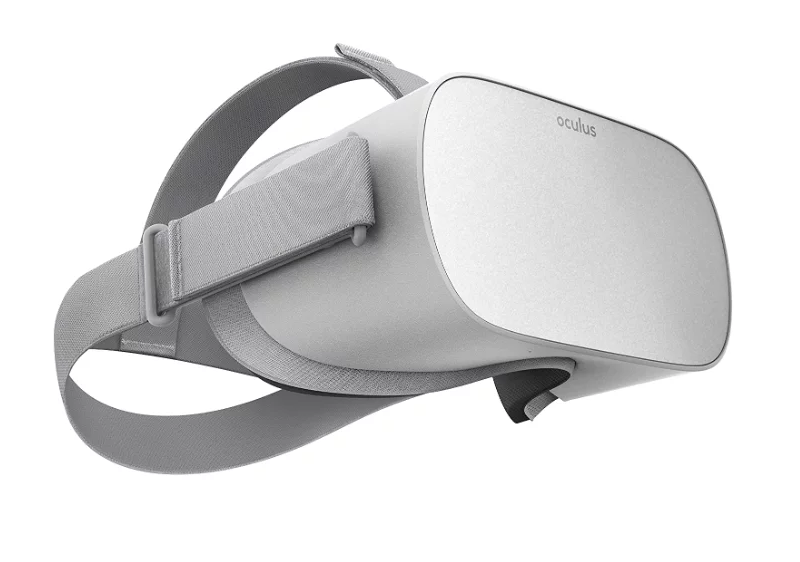
Virtual reality glasses Oculus Go. Source: market.yandex.ru
The virtual reality system (helmet, tracking system) is connected to a personal computer. You can do pretty powerful procedural graphics. Helmets have spatial joysticks, they are a continuation of the user's hands.
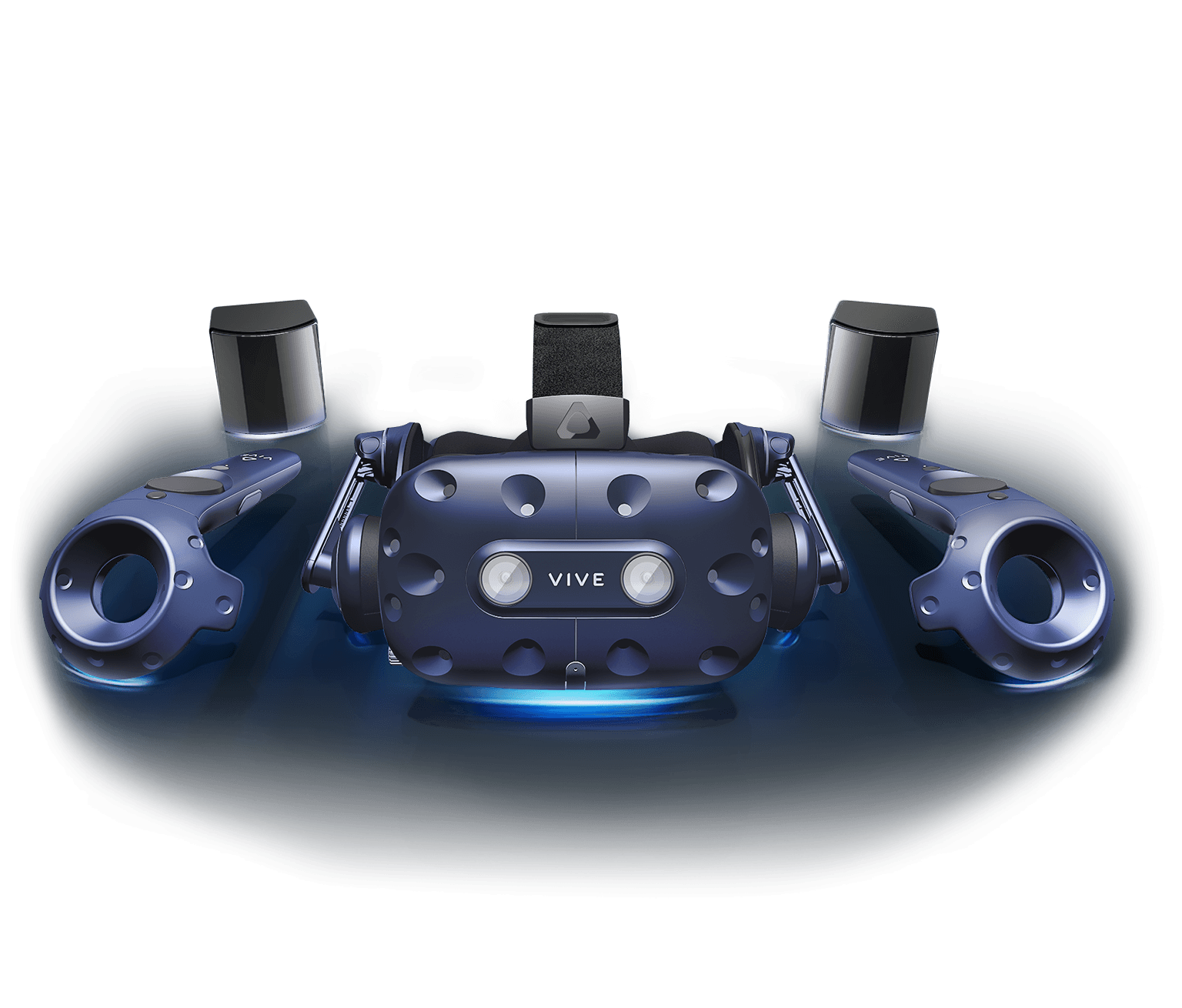
Virtual reality helmet HTC Vive. Source: www.vive.com
While it is difficult to find a job in the job descriptions like a VR designer, a VR scriptwriter or a producer of VR projects, these are the same specialists as in any studio that develops computer games, services, courses or advertising.
But these specialists must have certain competencies and expertise that is required to create VR projects.
It concerns:
Virtual reality (VR) - a world simulated by computer technology, into which the user can immerse themselves using special touch devices. VR technologies have gone a long way from the first experiments in the 60s of the XX century to modern virtual reality helmets. A new wave of interest in VR began thanks to the Oculus company and the prototype of the Oculus Rift glasses introduced in 2012.
VR continues to evolve: at a CES conference, Nvidia CEO Jensen Huang said the company sold 4 million virtual reality glasses for PCs. Sold more than a million points Oculus Go, about 2 million Sony Playstation VR and about 500 thousand points from HTC.

VR segment revenue in millions of dollars. Source: www.sostav.ru

Experts predict the development of VR-technologies in the 2020s
The main obstacle to the massive introduction of VR is the lack of user experience. We have already learned how to make modern devices with an excellent picture, but there are not enough specialists who could adequately build a UX.
VR applications
Entertainment segment
VR gives a new immersion experience, more tightly connects the player, character and game environment.
Kill zombies with your own hands in the game Arizona Sunshine
Game Terminator VR Arcade for LBE - entertainment in special places: gaming clubs, centers, virtual reality parks
Marketing
VR allows you to create a fast and powerful wow-effect; present a product and service that is difficult to demonstrate in reality; show the amount of space, layout of the object, which may not yet be built.
Modum Lab has developed a virtual showroom of YE'S apartments
Volvo test drive
Training
VR in training allows you to increase the efficiency of material delivery - you can put a person in situations that are difficult or expensive to simulate in reality; analyze how a person will act in an unusual situation. In banking, employees can work out customer communication scenarios.
BIOCAD uses a simulator from Modum Lab to practice skills in virtual reality
Chemistry lessons from the MEL Science project
The medicine
Using VR, you can train surgeons, train doctors' skills, and advise patients.
The Susan Project - VR simulator for medical staff in psychiatry
Why VR is used in business
- Presence, not observation - we do not look at the image on the screen, but are directly in virtual space.
- Immersion effect - more sensory systems are involved in VR: head turns, tilts, body movements, gestures.
- Focusing is the overlapping of real stimuli from objective reality: we see only what the virtual environment offers us.
What VR systems are on the market?
Mobile VR
In mobile systems, the main functions are taken over by a smartphone, which is installed in a proprietary headset, that is, the helmet is multi-component. They are convenient, easy to use, predictable from a development point of view. On the one hand, this is an opportunity to try VR inexpensively. But on the other hand, such boxes are probes, and serious decisions cannot be made on them.

Google’s Daydream virtual glasses. Source: vr.google.com

Samsung Gear VR virtual glasses. Source: www.samsung.com
Standalone
Standalone VR-helmets include all the necessary technical components in a single casing of the CPU (central processing unit) and a graphics processor, displays and, sometimes, even stereo speakers. They are completely autonomous, a smartphone is not needed, the entire "filling" is already built into it. These helmets have gained great popularity, as they are quite cheap and easy to use.

Virtual reality glasses Oculus Go. Source: market.yandex.ru
Stationary
The virtual reality system (helmet, tracking system) is connected to a personal computer. You can do pretty powerful procedural graphics. Helmets have spatial joysticks, they are a continuation of the user's hands.

Virtual reality helmet HTC Vive. Source: www.vive.com
How VR development differs from classic development
- Technical aspects - VR projects are more demanding: emphasis on content optimization.
- Great emphasis on testing in VR - the end user is in virtual reality goggles, so you need to constantly check whether it is convenient for him, is it comfortable to interact with the elements of space; artists, animators, programmers are constantly testing their developments and parts of projects.
- Specificity of user experience designing - the designer plays a big role, since it affects not only the user experience, but also the well-being of the user. If a specialist does not know how to correctly design a movement system in virtual space, then the user will not be able to comfortably move in space. The user can sit on a chair, but move around in a virtual scene. If you made a mistake during development, it can be rocked.
Who is working on VR projects
While it is difficult to find a job in the job descriptions like a VR designer, a VR scriptwriter or a producer of VR projects, these are the same specialists as in any studio that develops computer games, services, courses or advertising.
But these specialists must have certain competencies and expertise that is required to create VR projects.
It concerns:
- designers
- game designers;
- screenwriters;
- 3D artists and animators;
- programmers;
- producers and managers;
- creative and art directors.
What knowledge and tools are needed
- Expertise of user experience . Each specialist working with VR should understand how the user will move in the virtual space, whether it will be convenient for him to use controllers, and so on.
- Testing in VR . Testing should be fast and autonomous. For example, a 3D artist must check the quality of a picture without connecting other specialists: programmers, a leading artist.
- Skills in game engines . This skill will help you design a solution and test it.
- Work in graphic editors .
From the editors
- online profession “ Designing VR-interfaces ”
- Online Profession “ Motion Design, 3D and VFX Basics ”
- Game Designer Online Profession
All Articles